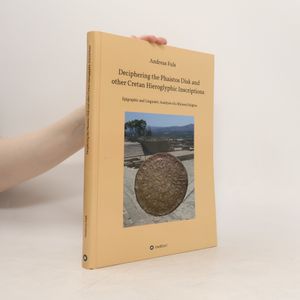
Paramètres
En savoir plus sur le livre
The Minoan culture on Crete, existing around 2100-1420 BC, left numerous inscriptions on seals and artefacts, with the Phaistos disk being the most notable. This small clay disk features impressed signs on both sides and poses a significant challenge for understanding the Minoan language and culture. The book introduces a new methodology in epigraphy for deciphering writing systems, utilizing mathematical and statistical methods to uncover fundamental principles of the writing system and its root language. This approach allows for a scientifically grounded decipherment, avoiding previous pitfalls of declaring the task impossible or relying on unfounded interpretations. The study successfully deciphers about 85% of the signs on the Phaistos disk with high confidence, verifying the discovered sound values and meanings against other hieroglyphic inscriptions from Crete. The analysis reveals that the Phaistos disk is linked to both Cretan and Luwian hieroglyphs, indicating that the texts are written in the Luwian language. Consequently, the Phaistos disk and other Cretan-Luwian inscriptions are part of a cohesive linguistic area that spanned from Crete to Western Anatolia during the Aegean Bronze Age.
Achat du livre
Deciphering the Phaistos Disk and other Cretan Hieroglyphic Inscriptions, Andreas Fuls
- Langue
- Année de publication
- 2019
Modes de paiement
Personne n'a encore évalué .

